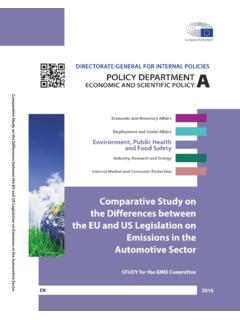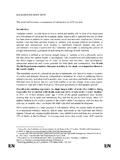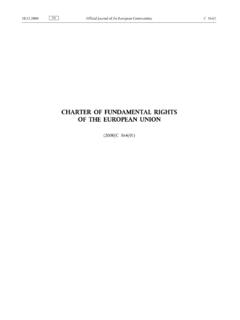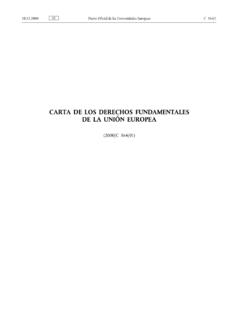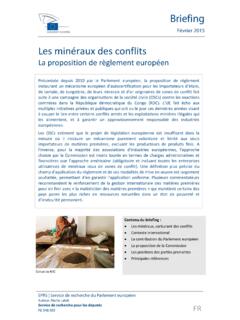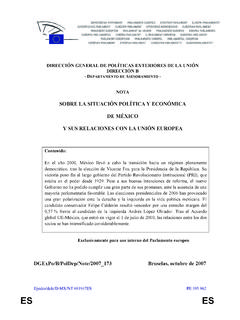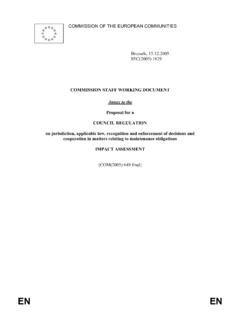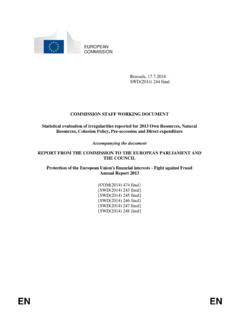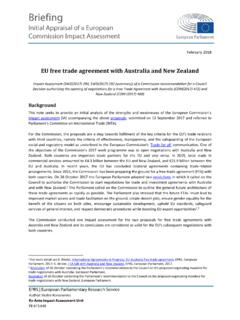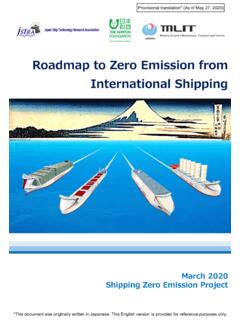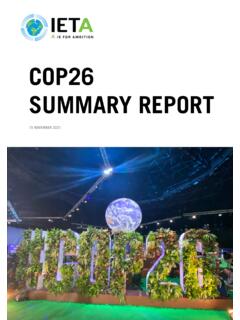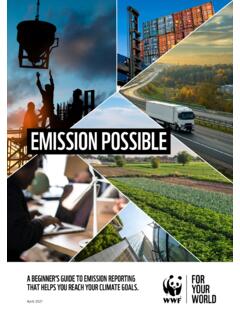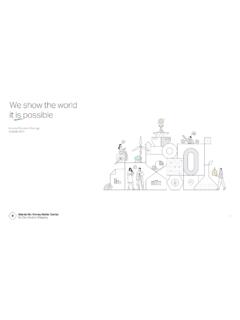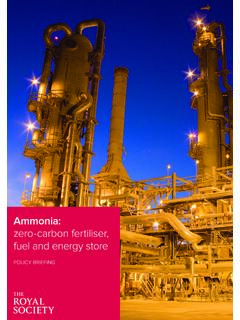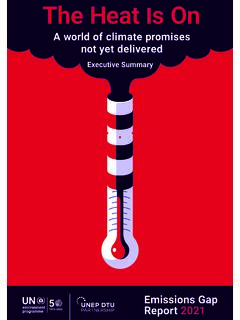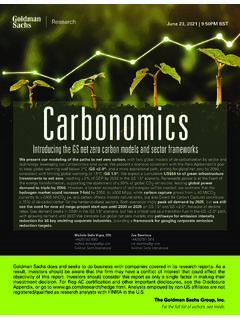Transcription of Sustainable and smart mobility strategy
1 BRIEFING. Sustainable and smart mobility strategy SUMMARY. Transport is the backbone of the EU economy, connecting people and businesses across various EU. regions and countries. The coronavirus pandemic has shown the impact of mobility restrictions on the free movement of people, goods and services and, at the same time, confirmed the essential role of transport in safeguarding the functioning of vital supply chains. However, transport also generates significant costs to society, in terms of greenhouse gas emissions , environmental pollution, accidents, congestion and loss of biodiversity.
2 EU ambitions to address these negative impacts have increased over the years. In December 2019, the European Commission put forward the European Green Deal that aims to make the EU carbon neutral by 2050. This goal was subsequently endorsed by the European Parliament and EU Member States. To achieve climate neutrality, the EU transport sector has to cut its CO2 emissions by 90 %. This requirement is in stark contrast with the past trend: despite previously adopted measures, transport is the only sector in which greenhouse gas emissions have kept growing.
3 The Commission has therefore proposed a strategy outlining how it wants to transform the EU. transport sector and align it with the European Green Deal, by making it green, digital and resilient. While transport stakeholders have welcomed parts of the strategy as steps in the right direction, concerns about the text's high ambitions and lack of concrete elements have been voiced. The Commission is to start proposing the measures envisaged in 2021. It remains to be seen to what extent, with what modifications and how fast they will be adopted and then implemented by EU.
4 Member States, shaping transport transformation for the years to come. In this Briefing Background The gist of the strategy Reactions Outlook EPRS | European Parliamentary Research Service Author: Marketa Pape Members' Research Service PE January 2021 EN. EPRS | European Parliamentary Research Service Background The course of EU transport policy has been defined by successive European Commission strategies. A major landmark, the 2011 White Paper, entitled Roadmap to a Single European Transport Area, identified the shortcomings of mobility in the EU many still largely present today and proposed an ambitious approach to overcome them.
5 It included the reduction by 60 % of transport greenhouse gas emissions by 2050 against 1990 levels and by 20 % below their 2008 levels. Declaring that 'curbing mobility is not an option', it made the 'modal shift' principle the cornerstone of the EU approach to transport, setting the goal to shift 30 % of road freight journeys over 300 km to less-polluting modes such as rail or waterborne transport by 2030, and more than 50 % by 2050. While the 2015 Paris Agreement gave new energy to climate efforts, it did not explicitly address the need to reduce aviation and maritime emissions .
6 The ensuing laborious debates and negotiations in the relevant international fora the International Civil Aviation Organization (ICAO) and the International Maritime Organization (IMO) resulted in the adoption of the Carbon Offsetting and Reduction Scheme for International Aviation (CORSIA) and the Initial IMO strategy on reduction of GHG emissions from ships, both appreciated for their global reach and criticised for their lack of climate ambition. Reducing EU transport emissions has been the target (or part of) several other EU strategic documents, in particular the 2016 strategy for Low-Emission mobility .
7 The von der Leyen Commission put forward the European Green Deal in December 2019 as a response to the acceleration in global warming, aiming for an EU with no net emissions of greenhouse gases in 2050, where economic growth is decoupled from resource use, leaving nobody behind. In 2020, due to Covid-19 related mobility restrictions, transport activity decreased significantly, bringing massive losses to the industry and leaving thousands of transport workers without a job. Going beyond short-term specific coronavirus measures, the Commission proposes to rebuild the sector, making it greener and smarter.
8 On 9 December 2020, it put forward the Sustainable and smart mobility strategy , outlining the planned steps to transform the EU transport system in line with the ambition of the European Green Deal and the objectives of the EU's Digital strategy . The mobility strategy is complemented with an action plan listing 82 initiatives in 10 key areas for action ('flagships') with concrete measures to be adopted over the next four years. The gist of the strategy The European Commission pledges to replace the course of 'incremental change' followed until now with a fundamental transformation.
9 This translates into three approaches applied to all modes of transport. First, to reduce the dependence on fossil fuels by replacing existing fleets with low- and zero -emission vehicles and increasing the use of renewable and low-carbon fuels. Second, to increase the use of less-polluting modes and shift a substantial part of today's inland freight carried by road (75 %) onto rail and inland waterways. And third, to internalise the external costs. A set of milestones is to keep the strategy on track. By 2030, the Commission aims to have in Europe at least 30 million zero -emission cars on the road and 100 climate-neutral cities, double high-speed rail traffic (compared to 2015), achieve carbon neutrality for scheduled, collective travel for journeys under 500 km, and ensure that automated mobility is deployed at large scale, and that zero - emission marine vessels are ready for the market.
10 By 2035, zero -emission large aircraft should be market-ready. By 2050, the Commission expects that in the EU, nearly all cars, vans, buses and new trucks are to be zero -emission, rail freight traffic will double and high-speed rail traffic triple, while the multimodal trans-European transport network (TEN-T) should be fully operational thus ensuring high-speed connectivity. The Commission wants to achieve this by strengthening the existing rules, proposing new legislation and providing support measures and guidance. 2. Sustainable and smart mobility strategy In road transport, the Commission wants to further tighten the CO2 emission standards for cars and vans as well as for trucks and buses.
